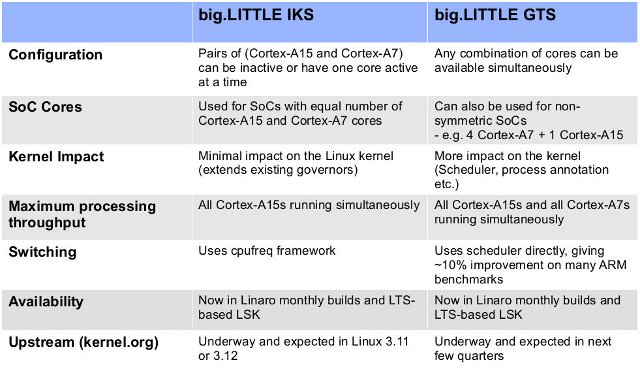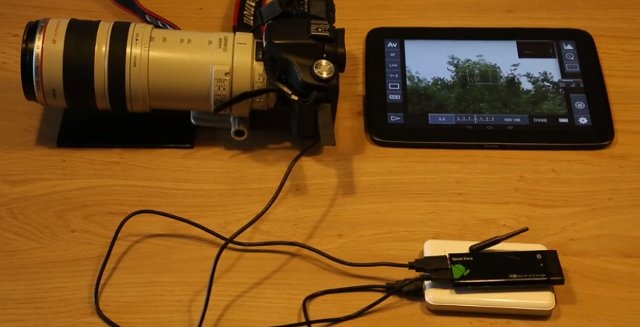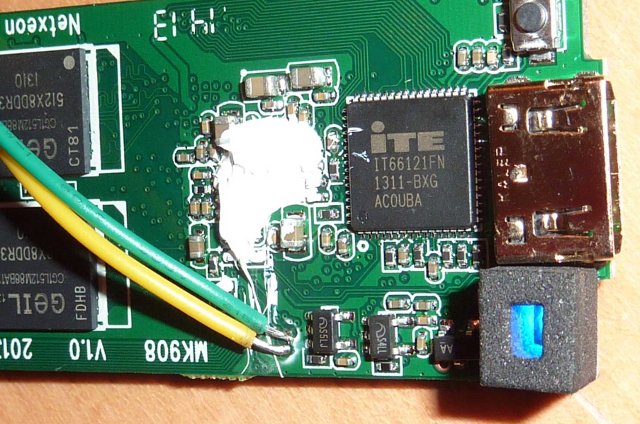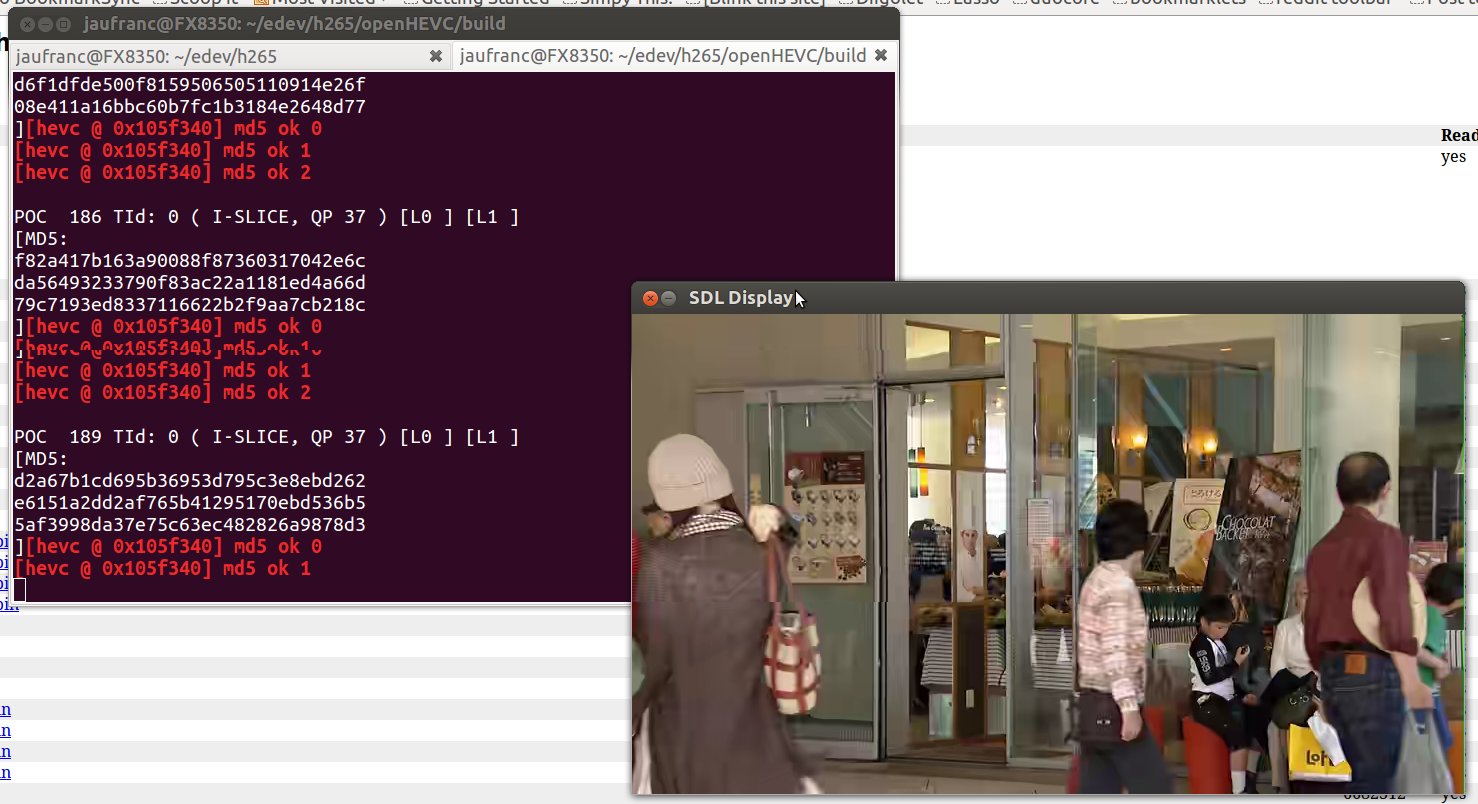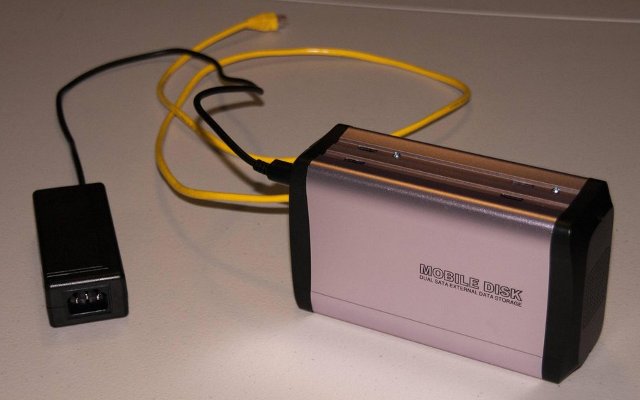big.LITTLE processing is a new technology announced by ARM in 2011 that allows an SoC to feature low power cores (e.g. Cortex A7) together with high performance cores (e.g. Cortex A15) in order to optimize power consumption. I’ve previously detailed two big.LITTLE software implementation methods: In-kernel switcher which runs tasks on either Cortex A7 or Cortex A15 depending on the load, but both processors can not run simultaneously. Heterogeneous multiprocessing (now called Global Task Scheduling) that assigns tasks to relevant Cortex A7 or Cortex A15 cores, and if needed, allows all cores to run at the same time. Linaro has just provided a update for the big.LITTLE software implementation. There are currently only two SoCs that ship in products with Linaro b.L kernel support: ARM’s reference Test Chip 2 (TC2) tile for the Versatile Express development platform, configured as an SoC with 2 Cortex-A15 cores and 3 Cortex-A7 cores. Samsung-LSI’s […]
Control your DSLR Camera via Wi-Fi using an Android mini PC and a Tablet
DSLR Controller is a paid Android app (beta) that uses your Canon EOS DSLR camera USB port in order to control it and access the camera live view with a tablet or smartphone. That may be useful, but it’s much better if you can roam a bit, and are not limited by the USB cable length. That’s why the application has been improved some time ago in order to use 2 Android devices, usually smartphones or tablets. One device is connected via USB to the DSLR camera, and act as a Wi-Fi access point, and the other device connects via Wi-Fi to allow full control of the camera. However, you don’t really need a screen on a Wi-Fi access point, so instead of using mobile devices, the developers decided to use an Android mini PC, specifically CX-919, which is just one of the many RK3188 mini PC available today, coupled […]
Lernstift Digital Pen Hits Kickstarter for $150
Lernstift is a digital pen running Linux that aims at helping children learning how to write by vibrating when they’ve made calligraphy or orthography errors. I’ve covered the overall concept in an earlier post, which you can read for details. The company has made some progress, and they have just launched a kickstarter campaign where you can pledge 99 GBP (about $150) to receive the pen later this year or in early 2014. We do know a little more technical details. The first prototype was based on Gumstix Overo (TI OMAP3 or Sitara), but they are now working to design a custom board based on the platform for the final design. The pen comes with 128 MB RAM and runs embedded Linux. In order to gather handwriting data, Lernstift leverages a motion sensor that combines gyroscope with accelerometer, and adds a magnetometer. They’ve got a drawing with Freescale MMA9950L, but […]
Hacking MK908 mini PC for Serial Console Access
Thanks to Omegamoon (and this brother) we already have instructions to connect the UART pins on MK808 in order to access the serial console. He’s done it again with MK908 mini PC featuring Rockchip RK3188. Tx and Rx pads are located on the RAM chips side, and he has connected the green wire to Tx (Going to Rx on TTL debug board), and a yellow wire to Rx (Tx on debug TTL board). A ground pad is available on the other side of the board. Since I got a sample for review from Geekbuying, I decided to give a try myself. The pad are quite small, so this may require patience, but it’s perfectly feasible. I wanted to keep the device closed, so I passed the wires through the ventilation holes (enlarging them a bit with a precision screwdriver), put back the main heatsink on RK3188, and reassembled the enclosure. […]
Play HEVC/H.265 Videos and Embed HEVC Streams into MP4 and TS Files with openHEVC and GPAC
I wrote an introduction to H.265 (aka HEVC) at the end of last year, including instructions showing how to encode videos to HEVC using the reference implementation. It worked but since it was not optimized for speed, it was extremely slow. Today I’ve stumbled across openHEVC, a open source compliant HEVC video decoder written in C, created as a fork of Libav. This is supposed to work pretty well as the implementation was used at Roland Garros Tennis tournament to playback an 720p50 HEVC stream transmitted over DVB-T2, IPTV, and MPEG DASH. Today I’ll mainly tried out the instructions provided on openHEVC github repo including: Build the source and playing a raw HEVC stream with hevc utility Build GPAC (open source multimedia framework), to get MP4Box, mp42ts, and MP4Client utilities. Import a raw HEVC stream into MP4 and TS containers, and play it back with GPAC tools. I’ve performed the […]
Zyxel NSA310 / NSA320 Hackable Network Access Storages Run Debian Linux
Yesterday, we saw how to make a NAS enclosure for the Cubieboard, but DesertF0x commented “Better take a NSA-310 or NSA-320. It is easy to install Debian and it has Gigabit!”, and I decided to have a look. The 2 devices appear to have been released at the end of 2011, and are powered by a Marvell ARMv5 compatible processor. Many NAS are expensive kits, but NSA310 (1 bay) is currently available for $88.50 and NSA320 (2 bays) for $95.34 on Amazon, which is just a little cheaper than the DIY Cubieboard NAS solution (~100 USD). Price looks attractive, now let’s have a look at some technical details, and instructions to install Debian. Both NAS more or less share the same hardware specifications except for a few details: Processor – Marvell Kirkwood 88f6281 ARMV5-TE compliant processor @ 1.2 GHz (Hardware datasheet) System Memory – 256 MB (NAS310) or 512 MB […]
Linaro Connect Europe 2013 Sessions and Mini-Summit
Linaro Connect Europe 2013 (LCE13) is taking place in Dublin, Ireland on July 8 – 12, 2013. If you are not there, you can still follow the event remotely as the event schedule is available with tracks focused on Android, Builds and Baselines, Enterprise, Graphics and Multimedia, Linux Kernel, Network, Project Management Tools and Training, and the Testing and Validation mini-summit will also take place at the same time. There will be hacking and lab sessions each day (except on Friday) where you can expect to learn useful skills. I’ve selected 2 sessions per day that I think might be particularly interesting. Monday 10:00 – 10:45 – ARMv8 Status and Updates Current Status of v8 tree What’s merged? What’s features are next priorities? Platform Updates What members should know about adding new v8 platforms 12:00 – 13:00 – How to make Android more efficient for entry level products The main objective of […]
DIY NAS Enclosure for The Cubieboard
The Cubieboard with a 1GHz processor, 1GB RAM, a SATA port and its low price ($49) is probably one the best available options if you want to make your own ARM based NAS. The hardware is easy to get, most of the software components (Linux, SAMBA/NFS server, Bittorrent client, etc…) are available, but there are no NAS enclosure available for the Cubieboard, so this part may be a little tricky. Cubieforums user Vustus has a pretty neat and cost- effective solution for an enclosure based on off-the-shelf parts. If you want to try it yourself, you’ll need the following parts: 3.5″ USB 2.0 aluminum external dual SATA HDD enclosure ($15) – http://www.geeks.com/details.asp?InvtId=ET-3541S 10″ Flat SATA cable ($2.49) – http://www.newegg.com/Product/Product.aspx?Item=N82E16812119365 SATA Y cable for power ($4.99) – http://www.newegg.com/Product/Product.aspx?Item=N82E16812198015 Power cable for th Cubieboard (taken from PSP power supply, as a cable would cost about $7 according to vustus) ($4.29) – http://www.amazon.com/gp/product/B002TK3GH8 […]


